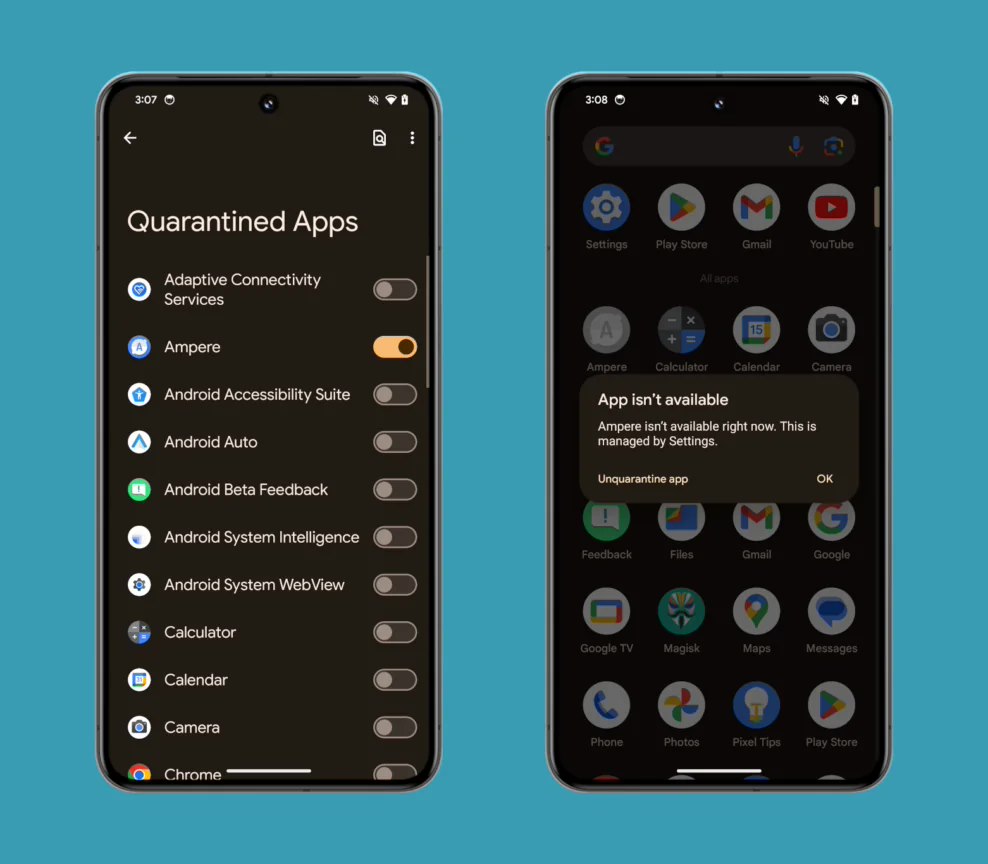On April 17, the upcoming Android 15 system may introduce a new feature: application isolation. This feature will better protect users from apps that behave erratically.
Android has always had a strong security mechanism to protect against malicious applications. Google’s App Store security service, Play Protect, also automatically removes malicious apps that it detects. However, any security software is not perfect, and there is inevitably the possibility of miscalculation. Play Protect typically takes a cautious approach, asking users if they want to remove suspicious apps when they encounter them. To help users better deal with suspicious apps, the possible addition of Android 15’s “app isolation” feature may provide a better solution.
Users who are familiar with anti-virus software for desktop operating systems such as Windows may be familiar with the concept of quarantine. When anti-virus software quarantines a file, it is usually because it suspects malicious behavior in the file, but because it cannot delete the file or has doubts about the malicious nature of the file, it leaves the decision to the user. The quarantined files are isolated from the rest of the system and cannot be executed, ensuring that potential malware cannot do evil.

Application isolation in the traditional sense does not exist in Android, mainly because Android was designed with system security in mind. Android apps do not gain system-level access, are sandboxed by default, can only communicate with other apps through predefined apis, and can only access those apis with explicit permissions. Because of these limitations, there is essentially no need to download third-party antivirus or anti-malware software for Android devices. Due to the different operating mechanism of Android and Windows, the application isolation function of Android is also slightly different from Windows.
How does Android 15’s app isolation function work?
When an app is quarantined in Android 15, it will behave differently than a normal app. It will still show up in the user’s home screen and Android Settings, but with some restrictions:
Notifications for quarantined applications will not be displayed
All Windows will be hidden and running activities will be stopped
Unable to control device ringtones
Other apps can’t query their services (but they can query their activities)
Cannot bind to systems or other applications and cannot receive broadcasts from them
Cannot be resolved
Igeekphone notes that from these restrictions, quarantined apps are similar to disabled apps, but still appear on the home screen. At the same time, application isolation is similar to the “suspend application” feature in Digital Health services, but the isolation feature can restrict the components of a single application. All in all, app isolation is somewhere between “Disable App” and “pause app.”
However, it is unclear when Google will officially launch the new feature. Signs of app isolation were first spotted in Android 14 QPR2 Beta 1 last November, but the developer page for quarantined apps has now been removed. While the function tag to enable OS level application isolation still exists, users cannot currently isolate applications manually, even from the command line. In addition, neither the Google App Store nor the Google Mobile Services apps currently request quarantined app permissions. As a result, it’s entirely possible that this feature won’t be available in Android 15 and could instead be delayed to a future release.









